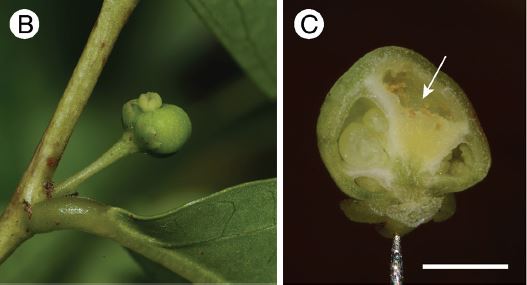Epicephala Corruptrix on:
[Wikipedia]
[Google]
[Amazon]
''Epicephala corruptrix'' is a 
 The
The
moth
Moths are a group of insects that includes all members of the order Lepidoptera that are not Butterfly, butterflies. They were previously classified as suborder Heterocera, but the group is Paraphyly, paraphyletic with respect to butterflies (s ...
of the family Gracillariidae
Gracillariidae is an important family of insects in the order Lepidoptera and the principal family of leaf miners that includes several economic, horticultural or recently invasive pest species such as the horse-chestnut leaf miner, ''Cameraria ...
. It is found on the Ryukyu Archipelago
The , also known as the or the , are a chain of Japanese islands that stretch southwest from Kyushu to Geography of Taiwan, Taiwan: the Ryukyu Islands are divided into the Satsunan Islands (Ōsumi Islands, Ōsumi, Tokara Islands, Tokara and A ...
(Amami Island, Tokuno Island, Okinawa Island, Ishigaki Island and Iriomote Island).
wingspan
The wingspan (or just span) of a bird or an airplane is the distance from one wingtip to the opposite wingtip. For example, the Boeing 777–200 has a wingspan of , and a wandering albatross (''Diomedea exulans'') caught in 1965 had a wingsp ...
is 7.2–8.8 mm. The forewings are brown with a narrow white band on the dorsum from the base to 2/3 of the entire length and with two pairs of narrow white bands beginning at the costal and dorsal margin near 1/2 to 3/4 length of the wing and extending obliquely toward the wing apex, terminating before reaching mid-width of the wing. The dorso-distal band is accompanied by another parallel band of same size on the distal position and there is a narrow silver band with metallic reflection extending from the costa to the dorsum at 5/6 length. The distal 1/6 is orange-brown with a black dot centrally, franked by short white band near the dorsum. The distal end is fringed with a narrow white band. The hindwings are brown.
The larvae feed on the seeds of '' Glochidion obovatum'' and '' Glochidion rubrum''.
Etymology
The species name is inherited from '' Tegeticula corruptrix'', a derived parasitic species of yucca moth. ''Epicephala corruptrix'' has a potential to corrupt the mutualistic relationship with its host because the species induces gall formation in pollinated flowers which then hardly produce seeds.References
Epicephala Moths described in 2016 {{Gracillariinae-stub